Brigadier General Charles E. “Chuck” Yeager, arguably the world’s most famous test pilot, has died at the age of 97. Tributes from far and wide have been paid to this World War II fighter ace and the first human to break the sound barrier, a feat that he achieved on October 14, 1947, at the controls of a Bell X-1 rocket plane.
Yeager died yesterday in Los Angeles, California. His wife, Victoria Yeager, provided the following statement on Twitter:
While mankind’s first supersonic flight will forever link Yeager with the X-1 in the public’s collective imagination, The War Zone pays tribute to the legendary pilot by looking at some of the other defining aircraft that he flew during his unmatched flying career and uniquely colorful life.

Beechcraft AT-11 Kansan
Aged 18, Yeager enlisted in the U.S. Army Air Corps — the precursor of the Air Force — in September 1941. Before being selected for pilot training, he served as a crew chief on the AT-11 Kansan, working as a technician on the aircrew trainer that was based on the popular civilian Beechcraft Model 18. It was onboard an AT-11 that Yeager got his first taste of flying and the airsickness he experienced sitting alongside the pilot made him, briefly, have second thoughts about a future career in the air.

Vultee BT-13 Valiant
In July 1942, Yeager was selected for pilot training under the Flying Sergeant program, a wartime initiative to train more pilots more rapidly. After completing primary pilot training at Hemet, California, he began the basic syllabus in the BT-13 Valiant at Gardner Field in Taft, California. Advanced training followed at Luke Field, Arizona, where he earned his wings as an enlisted pilot as part of Class 43-C on March 10, 1943.

Bell P-39 Airacobra
Yeager’s first operational posting, as a non-commissioned flight officer, was to the 363rd Fighter Squadron at Tonopah Bombing and Gunnery Range, Nevada, in March 1943, flying the P-39 Airacobra, a tricky single-engine fighter that was generally unloved by the U.S. military. Yeager himself had a close call when his P-39 caught fire during a training flight, forcing him to bail out and fracturing his back in the process. When the 363rd moved to England in late 1943, the unit left its P-39s behind.

North American P-51 Mustang
Alongside the experimental X-1, the P-51 is probably the aircraft type best associated with Yeager — his P-51B was the first of a long line of aircraft he named Glamorous Glen(nis), after his future wife, Glennis Faye Dickhouse. Flying from Leiston, eastern England, Yeager experienced his first combat in the P-51B in February 1944 and he had claimed one Messerschmitt Bf 109 destroyed before being shot down himself on his eighth combat mission, on March 5, 1944. The story of Yeager evading capture and, with the aid of the French Resistance, joining up again with his unit in England is an epic one, that’s been described many times before.

Yeager returned to combat in the improved P-51C that featured a “Malcolm Hood” — a bubble-type canopy that provided a much better all-round vision. However, the D-model Mustang was the classic Mustang model in World War II and it was on the P-51D that Yeager scored most of his kills — 12.5 in the air, including five Bf 109s that were downed on a single day, October 12, 1944, followed by four Focke-Wulf Fw 190s on November 27 the same year. He also shot down an example of the first operational jet fighter, a Messerschmitt Me 262, and damaged two more, in a single mission. Yeager flew his final combat mission in the European theater on January 15, 1945, for a total of 64 combat sorties.
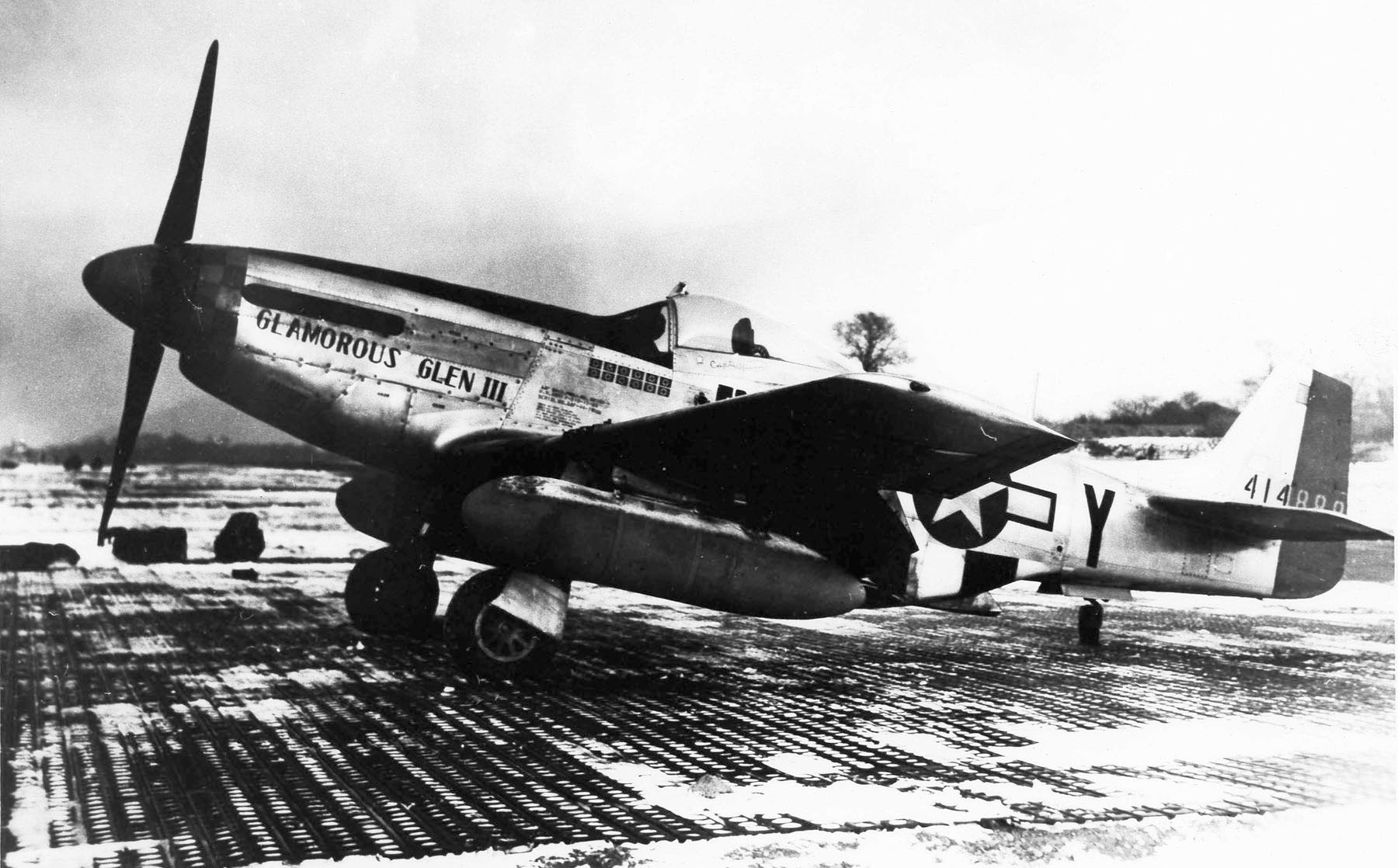
Lockheed P-80A Shooting Star
Back in the United States, Yeager became assistant maintenance officer in the Fighter Section of the Flight Test Division at Wright Field, Ohio, where his job was to conduct post-maintenance check flights, meaning he got to fly most of the fighters of the day. Yeager had his first chance to experience the performance of a jet aircraft for himself when he took to the air in a P-80A Shooting Star during service trials for America’s first operational jet fighter at California’s Muroc Army Air Field (the future Edwards Air Force Base), in September 1945.
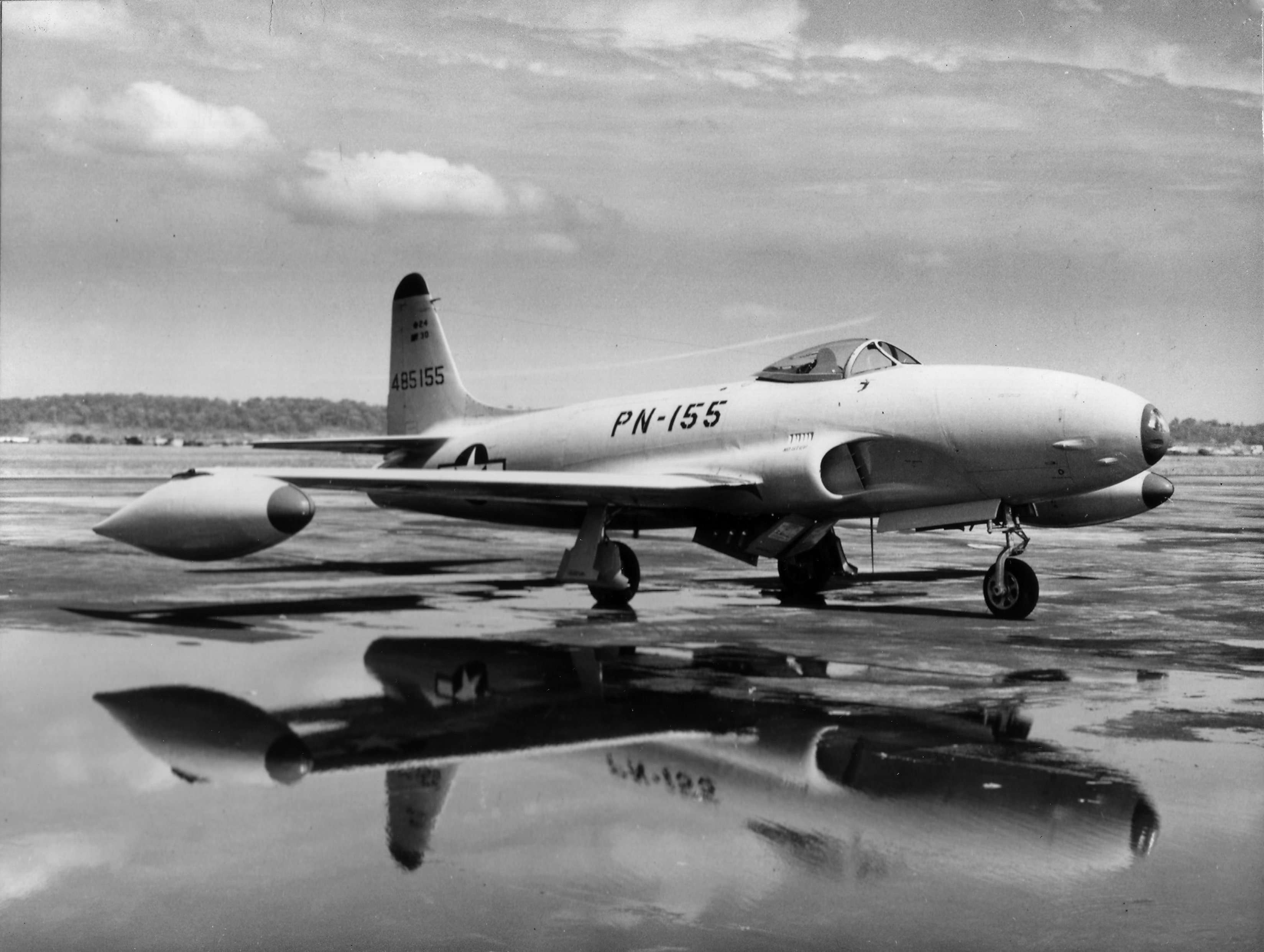
Bell XS-1 (X-1)
The instinctive flying skills that Yeager had demonstrated at Wright Field saw him selected in June 1947 as the test pilot for the rocket-powered Bell XS-1, in America’s bid to break the sound barrier. Yeager joined the team at Muroc in July 1947, and, after three unpowered flights, he was at the controls of the XS-1, named Glamorous Glennis, for its first powered flight on August 29, hitting Mach 0.85 after being dropped from the belly of an adapted B-29 bomber. After battling with the little-known effects of turbulence and buffeting from shock-wave compression, Yeager’s eighth flight, on October 10, nearly ended in disaster, after he lost pitch control at Mach 0.997. Following modifications to the tailplane, Yeager was back in the cockpit for his historic supersonic flight of October 14, becoming “The Fastest Man Alive.”

Mikoyan-Gurevich MiG-15
As an experimental test pilot at Edwards Air Force Base, Yeager was at the forefront of a golden age in flight testing and flew nearly all the experimental “X-planes” of the era, including the X-1A, X-3, X-4, and X-5. Just as exotic, however, was a MiG-15, the preeminent communist-bloc fighter jet of the period, an example of which had been provided by a North Korean defector. Between September and October 1953, Yeager was posted to Kadena Air Base in Okinawa, where he and Major Harold Collins completed a thorough evaluation of the Soviet jet, including taking it up to a height of more than 55,000 feet and diving it at its maximum speed of Mach 0.98.

Bell X-1A
As the follow-on to the pioneering X-1, the X-1A pushed the boundaries of speed further still, but test pilot Yeager met some major obstacles on the way. On December 12, 1953, Yeager took the rocket-powered X-1A to a speed of Mach 2.44, before cutting the engine. What Yeager experienced next was the phenomenon known as inertia coupling, which left the X-1A “snapping and rolling and spinning” around all three axes. Yeager was thrown around in the cockpit as the rocket plane dropped more than 50,000 feet but he managed to safely recover at 25,000 feet.


North American F-86H Sabre
Yeager was back flying in a frontline capacity when he took command of the 417th Fighter-Bomber Squadron in 1954, operating the “Sabre Hog” from Hahn Air Base, in Germany, and then Toul-Rosières Air Base, in France. While Yeager was commander, the squadron switched from an air defense mission to a tactical nuclear tasking. Yeager led the unit to victories in the U.S. Air Forces in Europe (USAFE) championships in 1955 and 1956, the squadron being recognized as the best in the command.
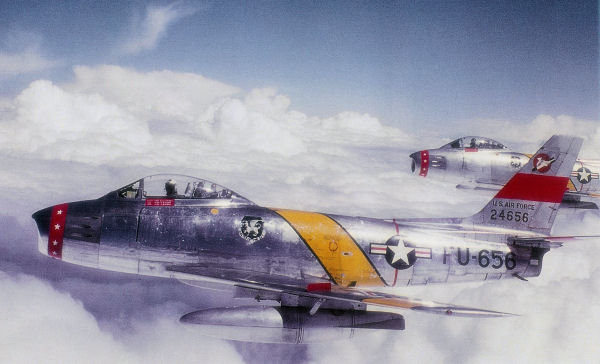
North American F-100 Super Sabre
Returning to California in 1957, Yeager took command of the 1st Fighter-Day Squadron, flying supersonic F-100 jet fighters at George Air Force Base. This was one of the leading Tactical Air Command (TAC) units and, under Yeager’s command, it pioneered the use of inflight refueling during long-range deployments. In support of this work, Yeager led the squadron on TAC’s first transatlantic jet fighter deployment, bringing its F-100s to Morón Air Base, Spain, in 1958.

Lockheed NF-104 Starfighter
Back at Edwards in 1961, Yeager was appointed deputy director of flight test and soon took over as commander of the USAF Aerospace Research Pilot School that was focused on preparing U.S. military test pilots for spaceflight. One of the aircraft prepared for the ARPS curriculum was the NF-104, a Starfighter modified with a 6,000-pound thrust rocket booster and reaction controls and intended to fly in a ballistic arc and provide pilots with experience operating in zero-G conditions.
At the controls of the jet on December 10, 1963, Yeager’s NF-104 pitched up at 104,000 feet, before entering a potentially lethal flat spin. After 13 revolutions, spinning “like a record on a turntable,” and after losing more than 90,000 feet, he finally ejected, sustaining serious injuries, but miraculously returning to flight status just six weeks later.
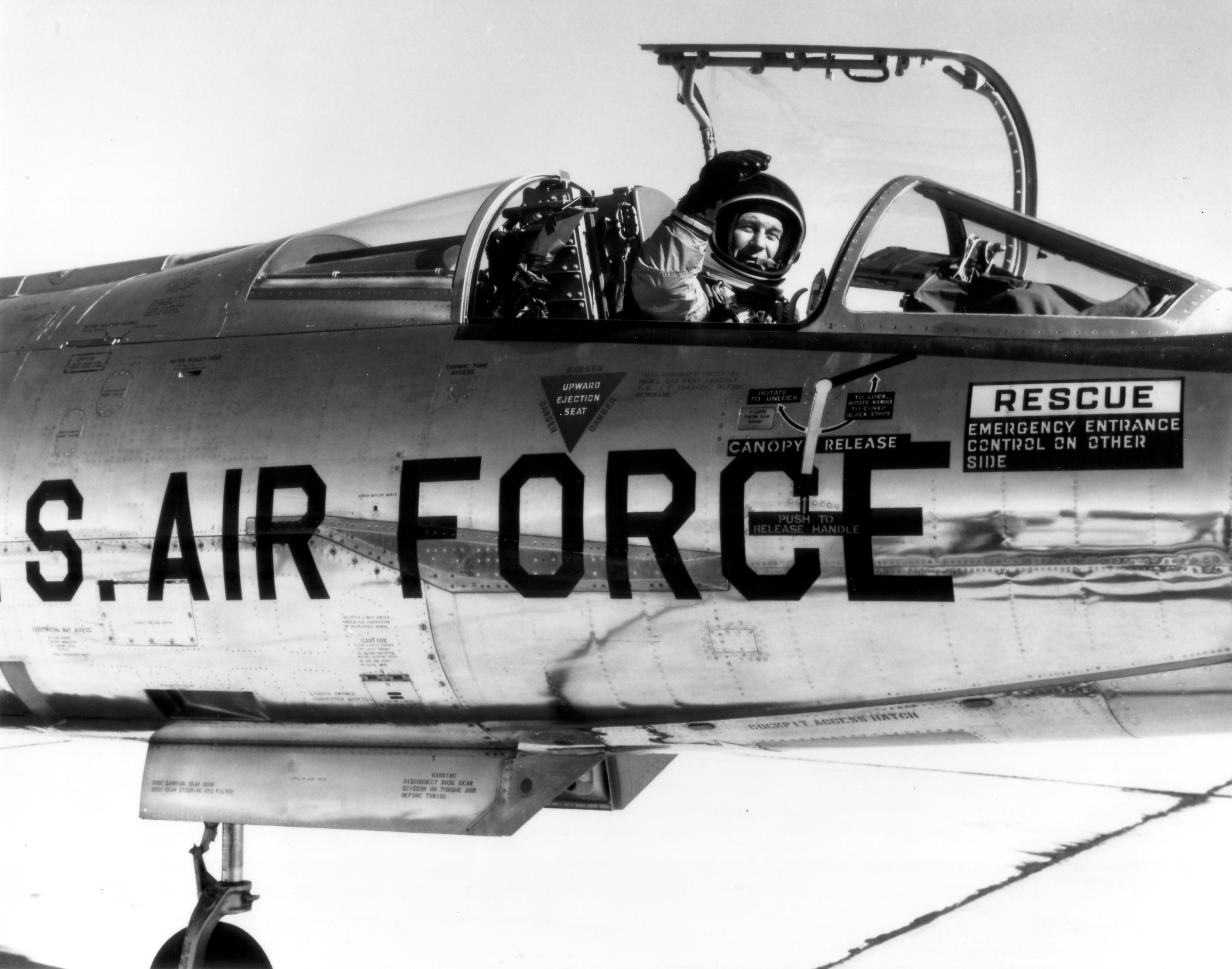
NASA M2-F1
Yeager became the first USAF pilot, and the third pilot overall, to fly a lifting body, when he took to the air in the bizarre M2-F1, or “Flying Bathtub,” on December 3, 1963. He wanted to see whether the M2-F1 was suitable as a lifting-body trainer for the Aerospace Research Pilots School. In contrast to most of the other experimental planes he flew, the wooden-built M2-F1 was unpowered and intended to research the properties of the wingless lifting-body concept. Later, powered versions would help gather data on re-entry vehicles for future manned spacecraft.

Martin B-57
In 1966, Yeager returned to a combat theater when he took command of the 405th Fighter Wing headquartered at Clark Air Base in the Philippines. He was responsible for five squadrons and multiple detachments across Southeast Asia, including two tactical bomber squadrons flying B-57s in South Vietnam; a squadron of F-100 fighter-bombers based in Taiwan; a pair of F-102 air defense squadrons at Da Nang, South Vietnam; plus detachments of other types, including F-4s. Yeager’s flying time was mostly dedicated to the B-57 and he eventually logged 127 combat sorties in the type, mainly flying close air support and interdiction missions.
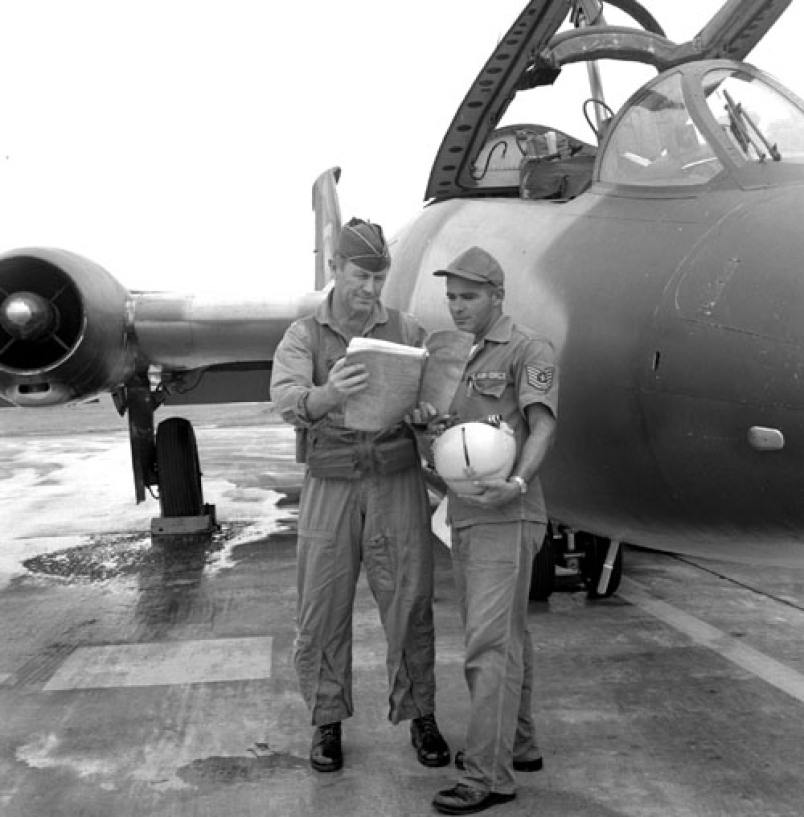

McDonnell Douglas F-4 Phantom II
In March 1968, Yeager took over command of the 4th Tactical Fighter Wing that was deployed to Kunsan Air Base, South Korea, in response to the Pueblo crisis, when North Korea attacked and captured an intelligence-gathering ship. Later that year, Yeager led the unit’s redeployment back to its home base at Seymour Johnson Air Force Base, North Carolina, where it achieved its first “Outstanding Unit” award.
The scene of so many of his achievements, Edwards was the location of Yeager’s last official active-duty flight with the USAF, when he flew a YF-4E on February 25, 1975. At the end of this flight, Yeager had recorded 10,131.6 hours in no fewer than 361 different types and models of military aircraft.

Northrop F-20 Tigershark
With Northrop aiming to secure customers for its F-20 light-weight multi-role fighter, the company hired Yeager to become a spokesperson for the program, which included him flying and personally endorsing the jet. The legendary pilot was on hand to provide an important public-relations boost on October 14, 1982, when he flew the jet to a speed of Mach 1.45, on the 35th anniversary of his historic first supersonic flight. You can read about Yeager’s promotion work for Northrop and the F-20 in this past article of ours.


McDonnell Douglas F-15D Eagle
The 50th anniversary of Yeager’s milestone flight was marked on October 14, 1997, when the famed aviator returned to Edwards AFB for a supersonic flight in an F-15 Eagle, appropriately named Glamorous Glennis for the occasion. Fifteen years later, Yeager celebrated the 65th anniversary in another Eagle, this flying as a passenger in an F-15D of the 65th Aggressor Squadron at Nellis Air Force Base, Nevada.
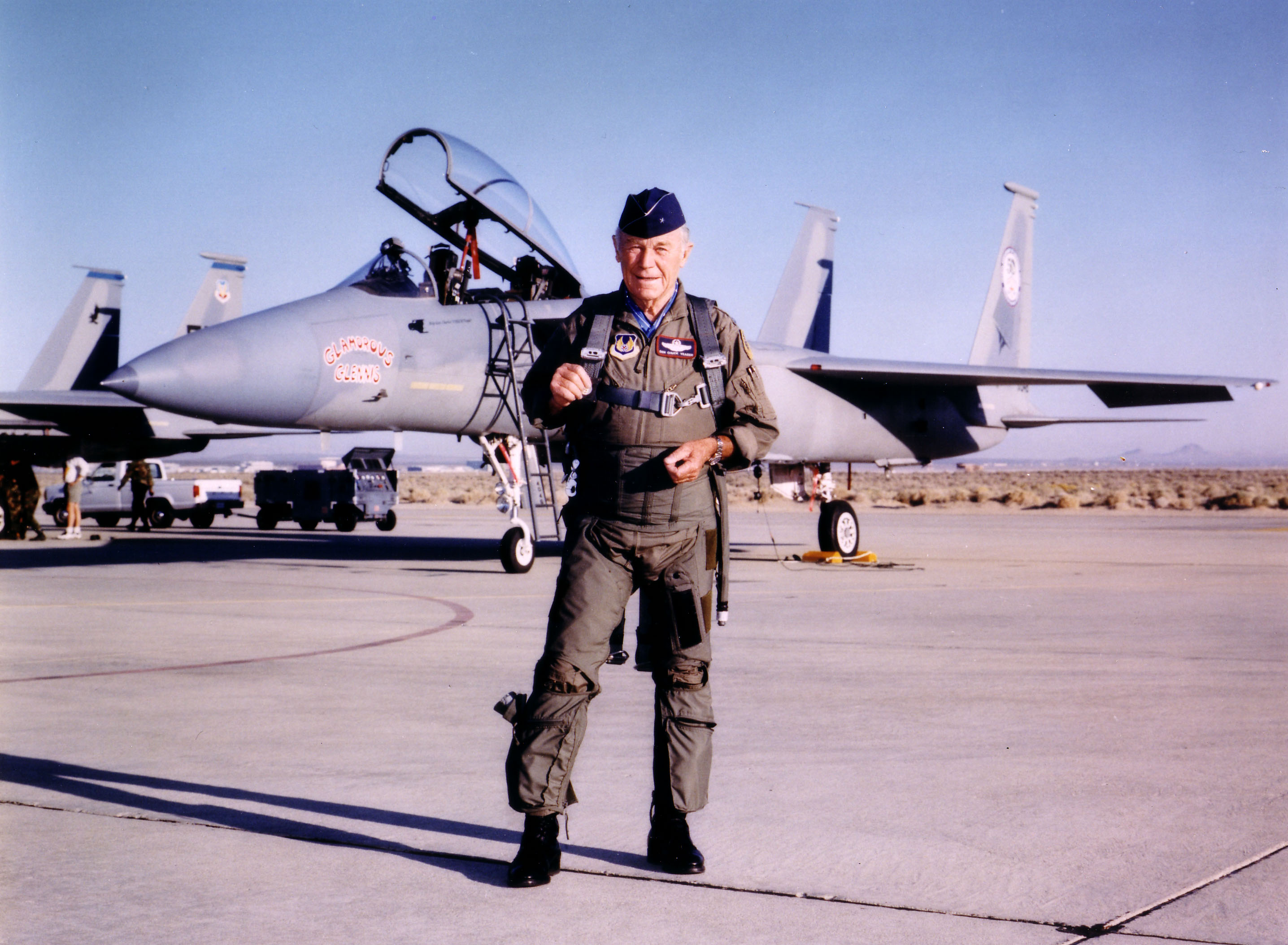

North American AT-6 Texan
Yeager’s passion for flying never diminished and he inspired countless young aviators to follow his path. He took an active role in promoting military flying, too, and is seen here at Maxwell Air Force Base, Alabama, in 2003, providing a flight experience to 12-year-old Danielle Orcutt, an elementary school student who had won an essay-writing competition. The aircraft is a World War II-era AT-6 Texan, of the type that many of Yeager’s contemporaries would have learned to fly on.

In a field in which there was no shortage of colorful, robust individuals, Yeager was in a different category to most of his pilot counterparts on account of his record-breaking exploits, which made him a household name. It’s hard to imagine a time when a test pilot might again win such fame and admiration from the public at large but, if they do, they will be following in the trailblazing spirit of the one-of-a-kind Chuck Yeager.
Contact the author: thomas@thedrive.com
